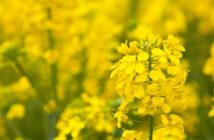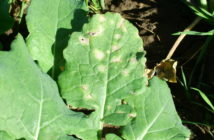Views on the value of Clearfield herbicide tolerant technology have been sought from farmers and agronomists in two surveys conducted by BASF.
“According to the 47 independent agronomists interviewed, 11% of the rape area harvested in 2016 was sown to Clearfield varieties and that they expect the area to increase to 15% for harvest 2017,” explains Matthew Goodson of BASF.
Over 34% of agronomists went on to confirm that they would definitely be recommending Clearfield for harvest 2017, with a further 21% saying they will probably recommend it.
In the farmer survey, 64 growers were questioned, they confirmed that 14% of the seed for this year’s planting will be Clearfield.
The farmers were also quizzed about their wider plans for seed sourcing this year; 25% said they were planning to home save their seed, up from 19% of growers in the previous year.
The farmer survey results also suggest that hybrids could make up 72% of the rape area to be sown this autumn, which includes 14% sown to Clearfield, 11% to HOLL varieties and 7% to HEAR varieties,” Mr Goodson adds.
Farmers said that they had ordered seed by the end of July. The survey indicated that the most popular rape varieties would be Elgar (27% of mentions), DK Extrovert (14%) which was the most widely grown variety last year, HEAR varieties Eraton (11% of respondents), Palmedor (also HEAR at 11%) and Campus (5%).
Both surveys also suggested that the widely predicted decrease in rape area may not be the case.
“Farmers indicated no change in the area they intended to plant this autumn; 48% of growers said they were likely to increase their oilseed rape planting, whilst 36% said they would be reducing their area,” Mr Goodson says.
The survey’s general consensus of opinion is that rape is a good fit for their rotations, it continues to be a good break crop and that its prospects are improving. However, there were continued issues cited, including damage from flea beetle, pigeons, profitability and disappointing black-grass control.
In the agronomist survey there was an expectation of a small (1%) reduction in winter oilseed rape area overall.
The agronomists were also concerned about black-grass control across the rotation; 55% of independent agronomists said that the level of black-grass control in this year’s cereal crops was much worse than last year, with 30% saying it was slightly worse. Consequently 64% of them are expecting very high black-grass weed pressure this year.
Clearfield technology is based on conventional plant breeding techniques to create varieties that are tolerant to the Clearfield herbicides: Cleranda (imazamox and metazachlor) and Cleravo (imazamox and quinmerac).
“Clearfield is regarded as a useful management tool to allow growers to retain or return oilseed rape back into the rotation if charlock and runch have been problem weeds,” advises Mr Goodson. “Treatment of a non-Clearfield crop with a Clearfield herbicide will result in complete crop loss, so careful management and record-keeping is vital. Clearfield volunteers can be easily controlled in following crops such as wheat through standard cultural and chemical means.”



